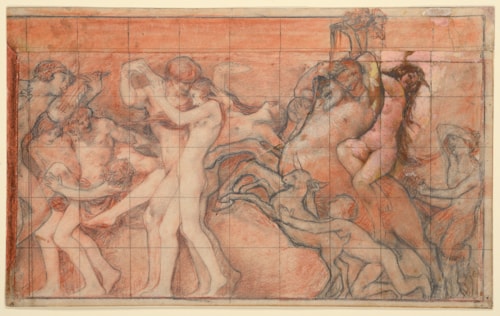
Charles Sargeant JAGGER
Kilnhurst 1885 - London 1934
Biography
Of humble origins and born into a mining community in Yorkshire, Charles Sargeant Jagger was apprenticed as a metal engraver at the jewelers and silversmiths Mappin & Webb in Sheffield. He studied part-time at the Sheffield Technical School of Art, where he also took evening classes in drawing and modelling. After completing his training in Sheffield in 1908, he won a scholarship to the Royal College of Art in London, where he in turn gained a travelling scholarship that allowed him to spend three months in Italy. In June 1914 Jagger won the Rome Scholarship in Sculpture, but with the outbreak of the First World War he was unable to take it up, and instead enlisted in the army. Wounded during the Gallipoli campaign in 1915, he returned to England to train other soldiers before returning to fight on the Western Front. In April 1918 he was wounded at Nieuwkerke in Belgium, and was awarded the Military Cross.
Appointed an War Artist in September 1918, Jagger was commissioned to sculpt a relief of The First Battle of Ypres: The Worcesters at Gheluvelt. This marked the start of a successful career as a sculptor of war memorials, for which he became well known, and which often reflected something of his own experiences in the trenches. Between 1919 and 1928 Jagger completed war memorials in Hoylake, Bedford, Manchester and Brimington, as well as in Brussels, Nieuport and Cambrai. His first such public sculpture in London - a bronze figure of a Soldier Reading a Letter for the Great Western Railway War Memorial, placed in Paddington Station - appeared in 1922. By far Jagger’s best known work, however, is the large Royal Artillery Memorial at Hyde Park Corner in London, commissioned in 1921 and completed in 1925; a work praised by one scholar as ‘a memorial which fuses pathos with endurance, and achieves in the end a hard-won stoicism from its confrontation with death.’
After the unveiling of the Royal Artillery Memorial in October 1925, Jagger’s output of war memorials largely ceased, and he began instead to receive commissions from architects for works to decorate public buildings. These included several works for buildings in New Delhi, commissioned by Sir Edwin Lutyens, as well as a series of sculptures for the neighbouring buildings of Imperial Chemical House and Thames House on Millbank in London. Elected a member of the Royal Society of British Sculptors in 1921, Jagger was voted an Associate of the Royal Academy in 1926. He also taught sculpture at the British School in Rome between 1921 and 1934, and in 1933 published an illustrated technical manual entitled Modelling and Sculpture in the Making.
In 1932 Jagger received a commission from Lutyens to sculpt a monument to King George V in New Delhi. The full-scale model for this work was, however, left unfinished at the time of Jagger’s death from pneumonia in November 1934, and the model was eventually completed and carved by the Scottish sculptor William Reid Dick. Between 1935 and 1937 a large memorial exhibition of Jagger’s work travelled throughout England and Scotland.
Jagger’s entire career was devoted to the production of monumental public sculptures, and unlike many of his contemporaries he did not maintain an independent studio practice, with its attendant private commissions for small-scale works. Almost all of his output is large in scale and was intended for an outdoor, architectural setting.


